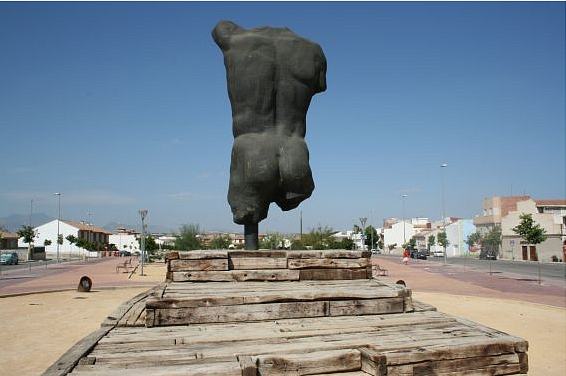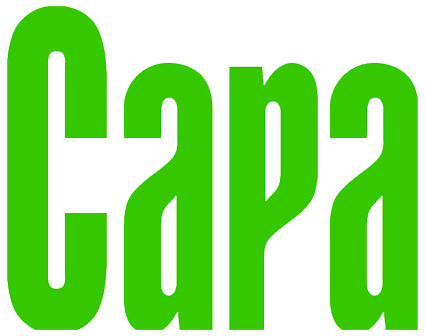Alberto Corazón
"TO STAY PRESENT IN THE ART WORLD YOU MUST VALUE, ABOVE EVERYTHING ELSE, THE EXTRAORDINARY THING THAT IS LIFE"By: Fátima Ruiz
Never has a surname represented such a major icon when defining a master in the art world. And if something describes him –and this he recognises– it his passion when creating works. Alberto Corazón (Madrid, 1942) is winner of the National Design Award (1989), has been a member of the Royal Academy of Fine Arts of San Fernando since 2006 and is the only European designer to have received the Medalla de Oro [Gold Medal Award] from the American Institute of Graphic Arts, the most important international recognition in this field. However, above all he is a fantastic graphic designer, so much so that his originality could not be limited to paper, instead branching out to painting and sculpture. It is in this facet of sculptor where we attempt to unveil another Alberto Corazón.
What connects and what distinguishes your sculptures and prints at Galería Capa Esculturas?
The experience making this set of small size sculptures that Capa proposed has been incredibly interesting and stimulating because I generally tend to make large size sculptures and scale is a vital component in sculpture, the same way colour is in painting. I have made the sculptures at Galería Capa in large format and although they are always similar, they are different works.
How are they connected with the prints?
From the work itself sprung the idea, why not use some of the work sketches as a form of stimulation, to warm up, like preliminary exercises... for this reason some of them are linked to the piece or parts of it. Printing also has sculptural merit. I really love the way in which you work the plate and inks.
What do these works mean?
The work of art, of creation, does not have an explanation, but instead references. This is why I am particularly meticulous when choosing the titles, as they are a way of helping the observer and enthusiast of the painting or sculpture penetrate this inexplicable territory.
What comes before, the title or the piece?
The title defines the aim, but also its nuances. For example, in one of the sculptures, 'Escuchar mareas' [Listening to tides], I merged two ideas that for me were interesting to explore: how to build a place to do something and for that something to be listening to tides, which is physiologically impossible, although on an emotional level you can listen to them. It is a proposal that could have an architectural translation. I think it could be done and it would be a place of retreat.

When the design reaches the Foundry... are you scared that it is out of your hands?
I don't get scared. The idea thrills me. Because effectively it stops being mine. The moment in which you deliver the mould, let's say the original –badly explained because the original is the sculpture, whereas that which comes before are previous steps– and you leave it in the hands of the workshop, the control that you have slips away. And it reappears at the end, with the patina finish. This process where someone else takes it under their wing and works it is exceptional.
What inspires a designer to go from paper to working in three dimensions?
They are two sides of the same coin. In one there is the design (rationality, knowledge, profession) which emerges when there is a commission. In this case, your commitment is exclusive and to the very end, and I tend to let go of the personal element. Whereas, in visual art creations, it is all the opposite; it is the dark side, the irrational aspect, it is the deep psyche, the side of things that you yourself cannot even explain. I realise I am making a true creative work when I lose control. It is something that flares up and is bursting with mystery If there is no mystery, there is no creation.
What do you have to do to stay present in the art world?
Above all else, value life, the extraordinary thing that is life, all that is around you and your own personal life.
Is there a sculpture that particularly moves you?
There is one that I hold in special regard, because for me it continues to be the most mysterious. It is called Ídolo [Idol]. It is a small torso with which I wanted to revisit the basis of classic sculpture (the human body and the head, statuary). One of the most powerful aesthetic emotions I have had in the last twenty years was when Ana and I visited the Riace Warriors on a trip to Reggio Calabria. This led me to take up statuary again and I consulted discourse on proportions. With this in mind, using a block of wood, I began to carve. The moment in which the works start to show a glimpse of the human body, I stop. There are examples of this cast in bronze in Capa in Madrid, Murcia, the University of Elche. It is an exercise that fascinates me.

What pieces of yours are on display in the recently inaugurated Galería Capa in Brussels?
In line with the space and my colleagues, Miquel Navarro and Manolo Valdés, I chose a selection of works. There is a never before exhibited wall sculpture that represents an alphabetical measurement. It is bronze, one strip and no more, very subtle, measuring around two and a half metres that I particularly like.
When someone buys one of your pieces, what do they take from Alberto Corazón?
It is a very contradictory feeling. There is a part of my artistic creation that I would always save for me and that I also try to do. On the one hand I feel extremely grateful. It is a huge gift when someone buys one of my works, aside from the fact they enable me to keep creating. In these situations, I have mixed feelings of economic and spiritual crisis as it is a privilege to be able to make these things, even with the sacrifices that are sometimes part and parcel. I feel privileged.




